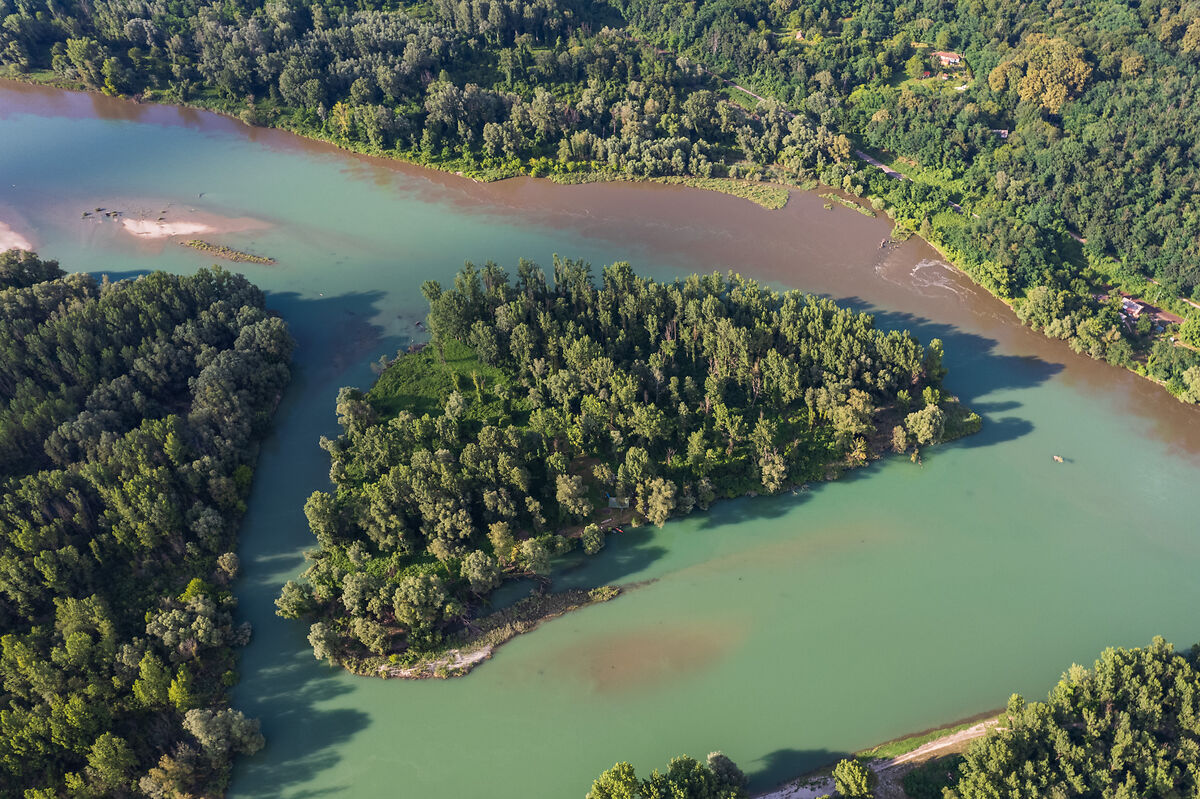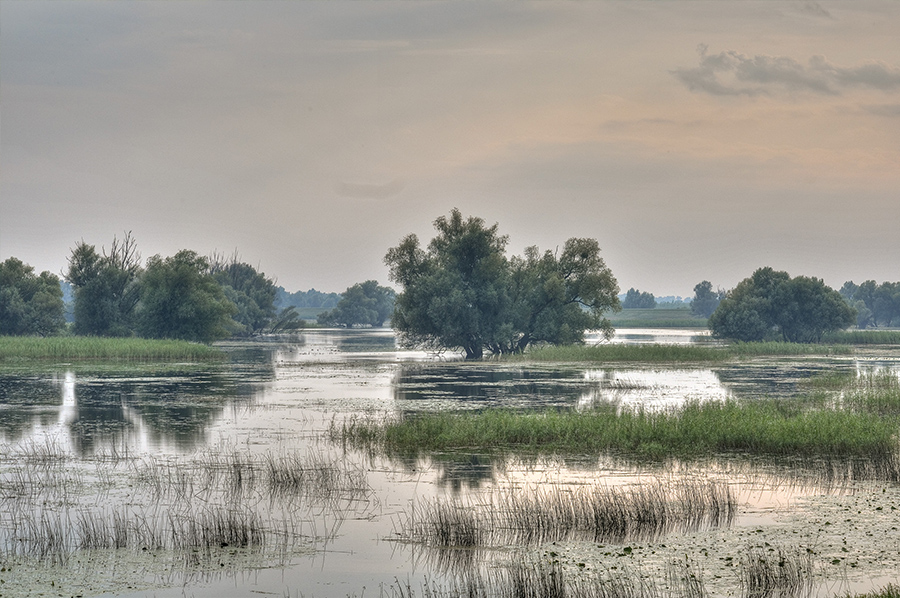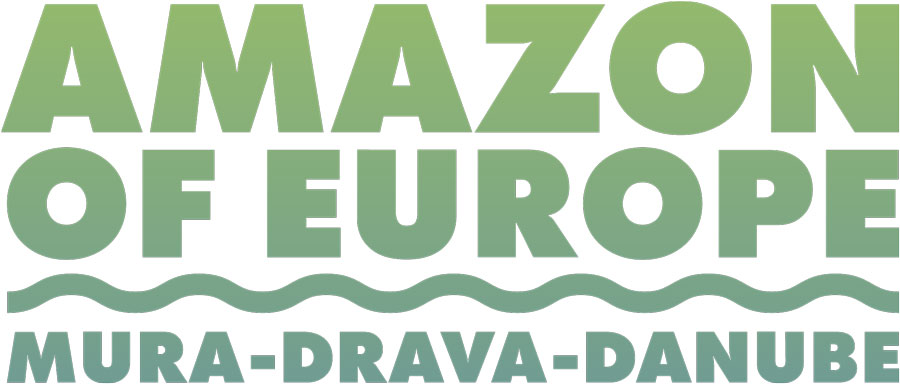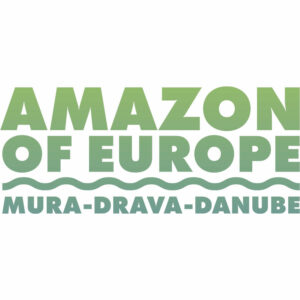PROJECTS
Despite its remarkable natural features and protected status, the UNESCO Five-country Biosphere Reserve (TBR MDD) is facing ongoing habitat degradation and loss of endangered species. A century of river channelling, the construction of dikes, the extraction of gravel and sand, as well as the construction of hydropower plants led to a loss of up to 80% of the former floodplain areas and the alteration of about 1,100 km of natural river banks and associated stretches.
Restoration of the characteristic natural conditions of the area is essential for improvement. Such restoration efforts would not only conserve biodiversity, but also provide multiple benefits:
- Improved flood protection
- Improved water purification, ensuring healthier drinking water
- Stabilised groundwater conditions
- Replenished fish stocks
- Support for small-scale farming and forestry
- Increased recreational opportunities for local communities
Three major restoration projects are currently underway in the TBR MDD region, including leading the LIFE RESTORE for MDD initiative, a milestone in restoration efforts as the largest and most ambitious restoration project ever undertaken in the area.
Ongoing projects

LIFE RESTORE for MDD
The LIFE RESTORE for MDD project (planned for 2023-2028) aims to conserve and restore floodplain forests along the TBR MDD. The project addresses habitat degradation by restoring floodplain forests, improving water bodies and enhancing river dynamics. It involves various restoration measures at 29 sites along the rivers, including reconnecting branches, widening river beds and converting plantations to natural forests, purchasing of valuable floodplain forests, and developing large-scale restoration plans, accompanied by public outreach, environmental education and continuous monitoring.

Restoring the Amazon of Europe
The Restoring the Amazon of Europe ELSP project (planned for 2022-2027) supports habitat restoration and sustainable management across the TBR MDD by establishing a Restoration Task Force to guide the restoration of 1,100 hectares, promote nature-based solutions and engage local communities. The project aims to improve river conditions, demonstrate sustainable forest management and transition to a nature-based economy.
Previous Projects
- DRAVA LIFE
The DRAVA LIFE project (2015-2024) aimed to restore and enhance the ecological health of the Drava River, by focusing on improving river dynamics, increasing biodiversity and improving flood protection. Key activities included reconnecting side branches, introducing extinct river plant species and protecting river birds. The project also engaged local communities, schools and stakeholders to support conservation efforts and ensure the long-term sustainability of the restoration measures. - lifeline MDD
The lifeline MDD project (2020-2022) focused on the protection and restoration of natural habitats along the Mura, Drava and Danube rivers. The project focused on developing a strategic framework for river restoration based on scientific research and pilot actions. It involved cooperation between nature conservation, water management authorities, NGOs and policy makers to ensure sustainability and improve connectivity in the TBR MDD. - Amazon of Europe Bike Trail
The Amazon of Europe Bike Trail project (2018-2021) was a cross-border cycling initiative in the TBR MDD region. The project aimed to promote sustainable tourism and economic development while preserving local ecosystems. Existing routes along the Mura, Drava and Danube rivers were equipped with rest areas and information points, resulting in more than 1,000 km of bike trails, balancing tourism and conservation efforts to create an eco-friendly attraction that supports regional growth.
If you want to discover the Amazon of Europe Bike Trail for yourself, you can find all the information you need here. - GoMURa
The GoMURa project (2018-2021) focused on flood safety and environmental management along the Mura River, on the border between Slovenia and Austria. Supported by the EU’s Interreg V-A programme, the project aimed to develop a comprehensive management plan for the river by 2030, including flood risk management, ecological improvements and public awareness campaigns. - coopMDD
The coopMDD project (2017-2019) aimed to establish a joint management framework for the transboundary biosphere reserve, bringing together protected area administrations. The project focused on river dynamics, sustainable development and environmental education. Key outcomes include joint management guidelines, a network of ‘Rivers’cools’ for outdoor learning, and action plans for stakeholder involvement and ecosystem restoration. - Natura Mura
The Natura Mura project (2014-2020) focused on restoring river dynamics and habitats along the Mura River in Slovenia. Key achievements included the restoration of wetland meadows, oxbows and side channels, and the widening of sections of the river bed. The project also included significant alluvial forest restoration and the strategic purchase of private land. These efforts have been crucial in conserving river and riparian habitats, enhancing biodiversity and improving sustainable water resource management along the Mura. - Wetland restoration
The wetland restoration project (2014-2020) in Serbia’s Gornje Podunavlje Nature Reserve focused on restoring 80 hectares of wetlands along the Danube. It aimed to improve water quality, enhance biodiversity, and boost climate resilience through activities like reconnecting water bodies, removing invasive species, and replanting native vegetation. - Old-Drava LIFE
The Old-Drava LIFE project (2014-2018) aimed to restore the Old-Drava oxbow lake ecosystem on the Hungarian-Croatian border. It focused on improving water retention, restoring natural water regimes and enhancing biodiversity. The project included measures such as the construction of a water supply canal, the removal of invasive species and the restoration of native forests, and served as a model for future oxbow lake restorations in the region. - LIVEDRAVA
The LIVEDRAVA project (2012-2017) focused on restoring the Drava River ecosystem in Slovenia, particularly for endangered bird species. It involved creating breeding habitats, restoring riparian forests, removing invasive plants and raising public awareness. The project aimed to balance ecological conservation with human activities along the Drava River. - DRA-MUR-CI
The DRA-MUR-CI project (2009-2013) focused on the sustainable development and conservation of the Drava and Mura rivers in Slovenia and Austria. It combined habitat restoration and invasive species control with public engagement and education. The project aimed to improve the ecological status of the rivers while promoting their sustainable use, balancing environmental protection with regional economic development. - BIOMURA
The BIOMURA project (2006-2011) aimed to restore biodiversity along the Mura River in Slovenia. It implemented measures such as riverbank restoration, habitat creation and the reintroduction of native plant species. The project involved local communities in conservation efforts and promoted sustainable land use practices, seeking to balance environmental protection with the socio-economic needs of the region. - INTERREG IIIA – Unteres Murtal
The INTERREG IIIA Lower Mura Valley project focused on improving the ecological and environmental conditions along the Grenzmur River in Austria. Key measures included the improvement of side channels, the widening of parts of the Mura and the management of alluvial forests. The project also promoted cross-border cooperation with Slovenia on sustainable river management. - Water Management Framework Grenzmur
The Grenzmur Water Management Framework (1998-2001) in Austria and Slovenia aimed to prevent further deepening of the riverbed, improve flood protection up to a 100-year event and improve the ecological status of the river. Key measures included widening the river bed and developing a sediment transport model. The project also addressed habitat loss affecting fish populations and included workshops to set development targets.

